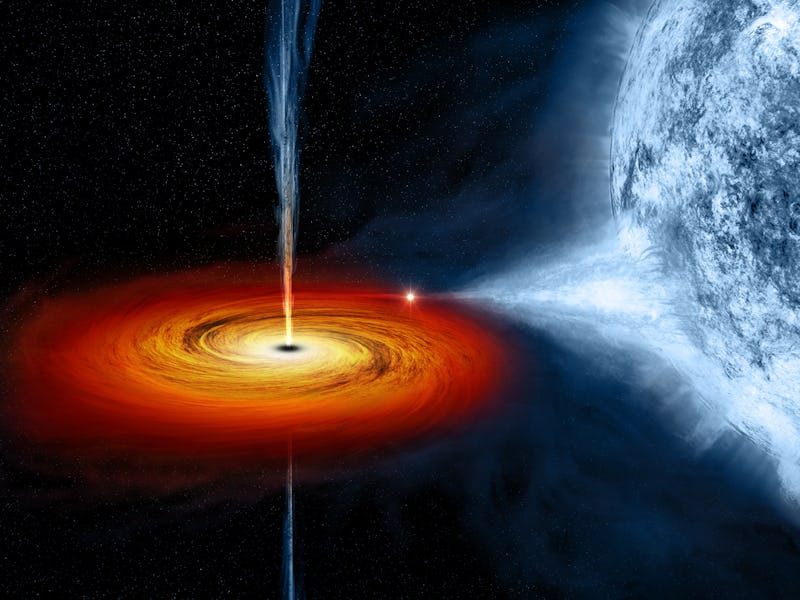Black holes don’t like getting too big for their home galaxies
A self-correction mechanism keeps the supermassive black holes at just the right size.

Supermassive black holes live in the hearts of their host galaxies, forming an everlasting bond that lasts billions and billions of years. So it’s no wonder that these pairs are completely in sync, growing together in a coordinated manner.
Scientists have often wondered what drives the correlation between the size of a black hole and its host galaxy, though, as well as how black holes form and evolve over time into the gigantic beings they are.
A new study published in the Monthly Notices of the Royal Astronomical Society on Monday sheds some light on the matter. It found that the relationship between a black hole and its host galaxy plays a key role in how both cosmic entities evolve over time.
Supermassive black holes grow in tandem with their host galaxies over time, according to the study. If a black hole starts getting too big for its galaxy, then it employs a method of ‘self-correction,’ in which it slows down its growth. On the other hand, if a black hole is too small for the host, it increases its growth rate to catch up with the galaxy.
Artist's rendering of a black hole at the center of a galaxy.
Astronomers suspect that all galaxies the same size as or larger than the Milky Way host supermassive black holes at their centers. But little is known about black holes in smaller, dwarf galaxies — which are more common in the universe — and whether their size would dictate that they host a smaller black hole.
In order to observe how black holes grow over time, the team of scientists from Yale University used the Romulus Simulation, which recreates the evolution of thousands of galaxies in different regions of the universe since the very beginning until today.
Through the cosmic simulation, the scientists also resolved a longstanding mystery about whether black holes grow along with their surrounding stars or if their massive size is related to their surrounding environment. The study found that star formation does play an important role in helping black holes grow to 50 times the mass of the sun.
As more stars form within a galaxy, the accretion rate or the amount of gas flowing into the black hole also increases, creating these super bright, fiery halos around the deep voids.
“These results represent the most thorough theoretical evidence for the former — the growth rate of black holes appears to be tightly coupled to the rate at which stars form in the host,” Priyamvada Natarajan, Ph.D., professor of astronomy and physics at Yale and lead author of the study, said in a statement.
However, with black holes, there are always anomalies because these massive voids don’t always follow the rules.
The more we learn about black holes, the better picture we will have of the evolution of the universe over time.
Abstract: We study the link between supermassive black hole growth and the stellar mass assembly of their host galaxies in the state-of-the-art ROMULUS suite of simulations. The cosmological simulations ROMULUS25 and ROMULUSC employ innovative recipes for the seeding, accretion, and dynamics of black holes in the field and cluster environments, respectively. We find that the black hole accretion rate traces the star formation rate among star-forming galaxies. This result holds for stellar masses between 10^8 and 10^12 solar masses, with a very weak dependence on host halo mass or redshift. The inferred relation between accretion rate and star formation rate does not appear to depend on environment, as no difference is seen in the cluster/proto-cluster volume compared to the field. A model including the star formation rate, the black hole-to-stellar mass ratio, and the cold gas fraction can explain about 70 per cent of all variations in the black hole accretion rate among star-forming galaxies. Finally, bearing in mind the limited volume and resolution of these cosmological simulations, we find no evidence for a connection between black hole growth and galaxy mergers, on any time-scale and at any redshift. Black holes and their galaxies assemble in tandem in these simulations, regardless of the larger scale intergalactic environment, suggesting that black hole growth simply follows star formation on galactic scales.